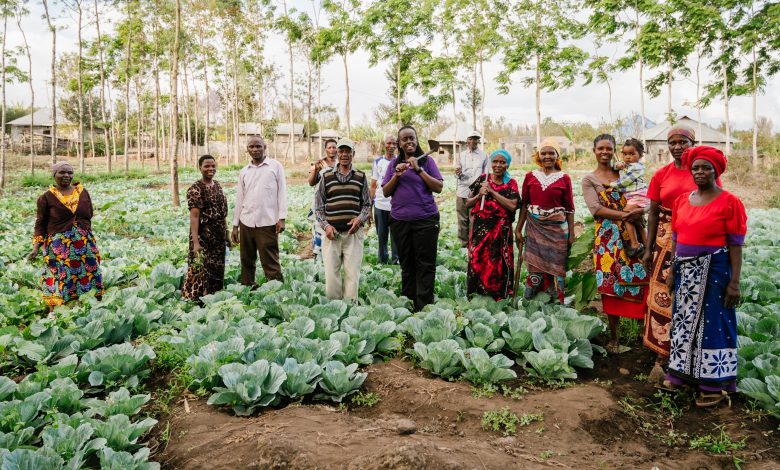Co-operatives step up as Tanzania seeks more resilient rural economy

Inside the dust-swept grounds of this year’s Nane Nane agricultural fair, the most telling exhibits were neither hybrid seed packets nor gleaming tractors but hand-ruled ledgers.
Line after line of rainfall data, milk volumes and cash-flow projections hinted at a quiet transformation now coursing through Tanzania’s co-operative movement—one that aligns closely with government efforts to strengthen food security and rural livelihoods under the Third Five-Year Development Plan.
The shift traces back to early 2023, when Moshi Co-operative University partnered with Swedish development organization,
We Effect to put 90 co-operative and civil-society managers through an intensive course on strategic planning, governance and entrepreneurship.
Economist Prof Baltazar Namwata, who directs the programme, says the training encourages producers to think like businesses rather than aid recipients.
“We are moving from hope to hedging,” he explains. “If co-operatives can forecast cash, negotiate credit and adopt climate-smart methods, they can cushion the next shock and contribute more reliably to national grain balances.”
That mindset was on open display at the fair. High on the slopes of Kilimanjaro, the Kilimanjaro Dairy Co-operatives Joint Enterprise has already replaced informal middlemen with direct contracts to processors—a change that has almost doubled the farm-gate price of milk for the network’s 1,813 livestock keepers.
ALSO READ: IPRT, Zanzibar TR partner for Isles Communication Awards
Daily yields, once hostage to seasonal fodder shortages, have begun to climb after the board—dominated by women—insisted on routine feed trials and rainfall logging.
The same board is piloting a weather-index insurance scheme so that a failed season no longer wipes out family income.
Manager Ernest Haule credits a sharpened culture of bookkeeping for closing leaks that previously went unnoticed. “When every litre is written down, you see where it vanishes,” he notes.
Farther south, vineyards around Dodoma are telling a similar story. The Mpunguzi Grape Farmers and Marketing Co-operative (UWAZAMAM) used pruning clinics, soil-health diagnostics and pest-management training to lift yields from 3.5 to seven tonnes an acre in a single season.
Membership has more than doubled to four hundred, half of it female. Accountant Emmanuel Temba now spends evenings fine-tuning a feasibility study for a small winery.
“Selling fresh grapes earns a price,” he remarks. “Owning the bottle captures the whole value curve.” That logic dovetails neatly with the government’s push for value addition under the Agricultural Sector Development Programme II, which aims to turn primary produce into higher-margin commodities.
Youth inclusion—a standing priority in the national agenda—is advancing through the Tanzania Youth Coalition’s four-region project “Boresha Maisha ya Vijana.” At a newly opened agribusiness academy outside Dodoma, eighty trainees have already learned to navigate food-safety standards, calculate input costs and design basic branding.
Project lead Yahaya Kitogo points to peanut growers who used to sell raw nuts at the farm gate but now mill peanut butter in hygienic rooms and market it with proper labels.
“Same hectare, different balance sheet once you own the label,” he tells visiting students, holding up a jar that now fetches triple the former income.
None of these plans would hold, however, without secure land tenure—still a fault line in many rural districts. Lawyer Innocent Cyprian of the Tanzania Land Alliance argues that a title deed is Tanzania’s first line of climate defence.
Customary inheritance rules too often push widows and daughters off the land; a paralegal campaign is therefore moving village to village, guiding families through joint registration and inheritance documents.
“Investing in drip irrigation or hybrid seed makes no sense if ownership is in dispute,” Cyprian observes, adding that the Land Alliance’s work complements recent government directives on gender-responsive land governance.
We Effect programme coordinator Frank Ademba keeps the running totals: the “Livelihood and Right to Food” initiative now spans seven regions, reaches 120,000 farmers—60 percent of them women—and generated 28 million shillings in product sales during last year’s fair week alone.
Yet Ademba resists any suggestion that the job is done. The Tanzania Meteorological Authority has warned of ongoing rainfall variability, and commercial banks remain hesitant to accept crop collateral.
Co-operatives are lobbying district councils to accelerate warehouse-receipt systems so growers can store grain, borrow against it and sell when prices improve. National discussions on crop insurance and drip-irrigation incentives are also under way, though deadlines remain uncertain.
What emerges from these intertwined efforts is a more confident rural constituency—one that arrives at Nane Nane armed with spreadsheets rather than petitions.
Prof Namwata believes that cultural shift may prove the most enduring outcome of all. “When smallholders meet processors, bankers and land officers as negotiators rather than supplicants, they raise the floor for everyone,” he says.
If the country’s co-operative ledgers continue to expand in the months ahead, Tanzania’s broader food-security goals might be written in the same ink.





